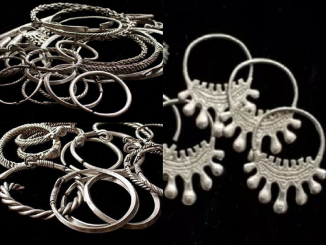The small hair ornament was made of a natural gold alloy and was the only object buried in the grave of a Bronze Age woman.

Gold jewelry in a Bronze Age woman’s tomb. Photo: Tubingen University
Archaeologists discovered a small gold spiral jewelry in an ancient tomb in Ammerbuch, Baden-Wurttemberg state, southwestern Germany, 7 km from the city of Tubingen, Ancient Origins reported on May 26. This is the oldest precious metal object ever unearthed in the state. The excavation trip was organized by professor Raiko Krauss at the University of Tubingen and Dr. Jorg Bofinger at the Baden-Wurttemberg State Cultural Heritage Administration.
The group of experts believes that this jewelry belonged to a woman buried in the grave and was used for her hair. It was next to the remains but closer to the hip than the skull. This suggests that the woman may not have worn it when buried. However, this is the only item in the tomb, proving that the woman highly valued this item.
The remains were still quite intact, allowing the research team to accurately date using carbon isotopes. The woman was buried between 1850 and 1700 BC, when Central Europe transitioned from the late Neolithic to the early Bronze Age. The remains lay in the fetal position, facing south. This burial method was also used with many other burials from the late Neolithic period.
One of the most interesting features of the new discovery is the type of gold used to make jewelry. Chemical analysis revealed that this is a natural alloy. Its chemical composition includes 20% silver, 1-2% copper and small amounts of platinum and tin.
Untreated gold alloys have distinctive traces that often help researchers trace their geographical origin. In this case, they were surprised to find that the gold alloy originated from an area near the River Carnon, Cornwall, southwest England.
Cornwall is about 1,200 km from the city of Tubingen, which means gold, even finished jewellery, was transported great distances. This proves that trade networks played a prominent role in the lives of early Bronze Age Europeans.
The woman in the tomb may have had a high status because she wore luxurious jewelry. However, the strange thing is that the remains were only buried with a single piece of jewelry, with no other items left. Thus, maybe women are not really rich and powerful. It is possible that she once served a rich man and was given gold jewelry as a reward for her devotion. Another possibility is that her family was rich but went through difficult times and had to sell most of their valuable belongings.


